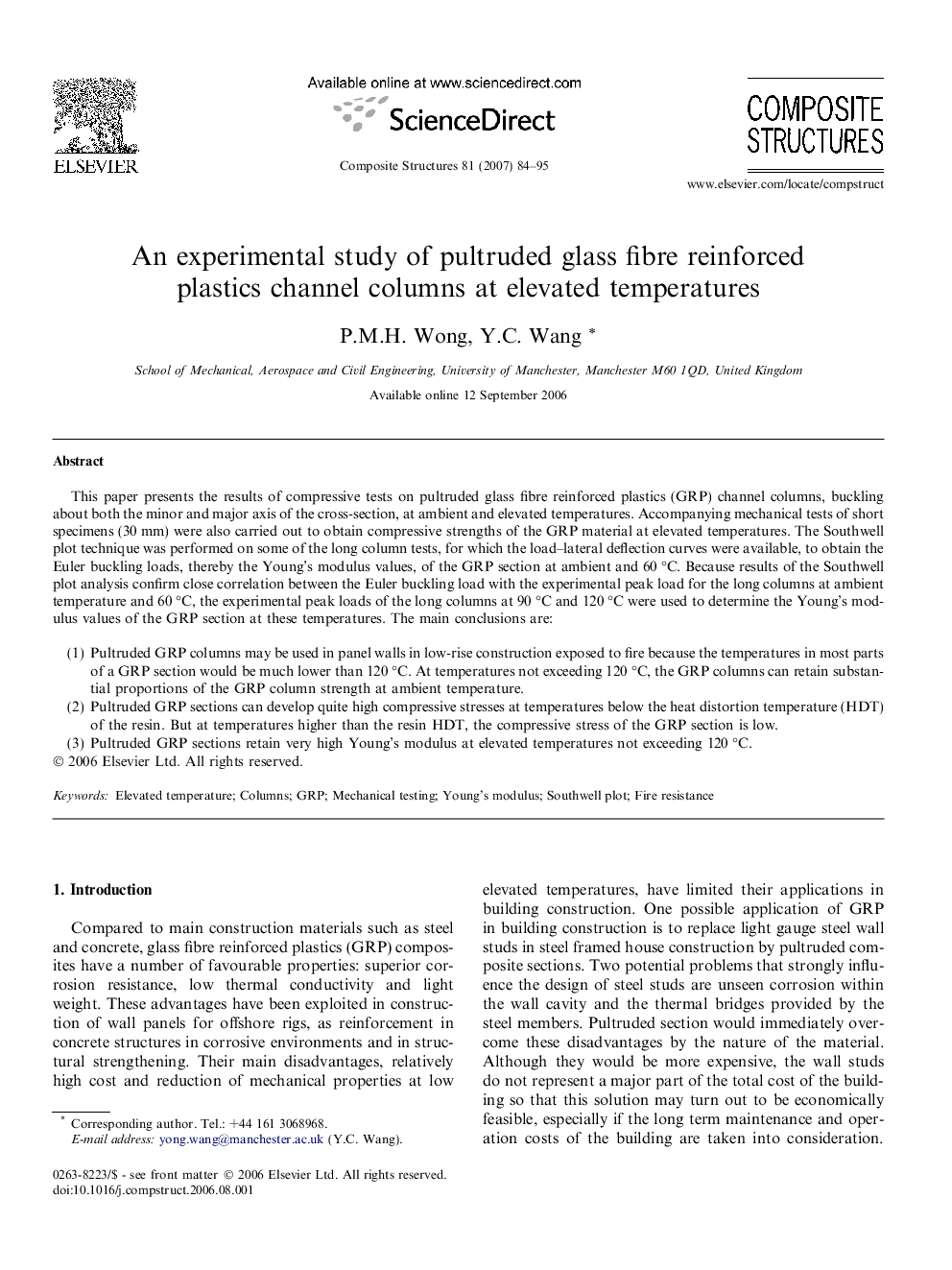| کد مقاله | کد نشریه | سال انتشار | مقاله انگلیسی | نسخه تمام متن |
|---|---|---|---|---|
| 253963 | 503037 | 2007 | 12 صفحه PDF | دانلود رایگان |

This paper presents the results of compressive tests on pultruded glass fibre reinforced plastics (GRP) channel columns, buckling about both the minor and major axis of the cross-section, at ambient and elevated temperatures. Accompanying mechanical tests of short specimens (30 mm) were also carried out to obtain compressive strengths of the GRP material at elevated temperatures. The Southwell plot technique was performed on some of the long column tests, for which the load–lateral deflection curves were available, to obtain the Euler buckling loads, thereby the Young’s modulus values, of the GRP section at ambient and 60 °C. Because results of the Southwell plot analysis confirm close correlation between the Euler buckling load with the experimental peak load for the long columns at ambient temperature and 60 °C, the experimental peak loads of the long columns at 90 °C and 120 °C were used to determine the Young’s modulus values of the GRP section at these temperatures. The main conclusions are:(1)Pultruded GRP columns may be used in panel walls in low-rise construction exposed to fire because the temperatures in most parts of a GRP section would be much lower than 120 °C. At temperatures not exceeding 120 °C, the GRP columns can retain substantial proportions of the GRP column strength at ambient temperature.(2)Pultruded GRP sections can develop quite high compressive stresses at temperatures below the heat distortion temperature (HDT) of the resin. But at temperatures higher than the resin HDT, the compressive stress of the GRP section is low.(3)Pultruded GRP sections retain very high Young’s modulus at elevated temperatures not exceeding 120 °C.
Journal: Composite Structures - Volume 81, Issue 1, November 2007, Pages 84–95